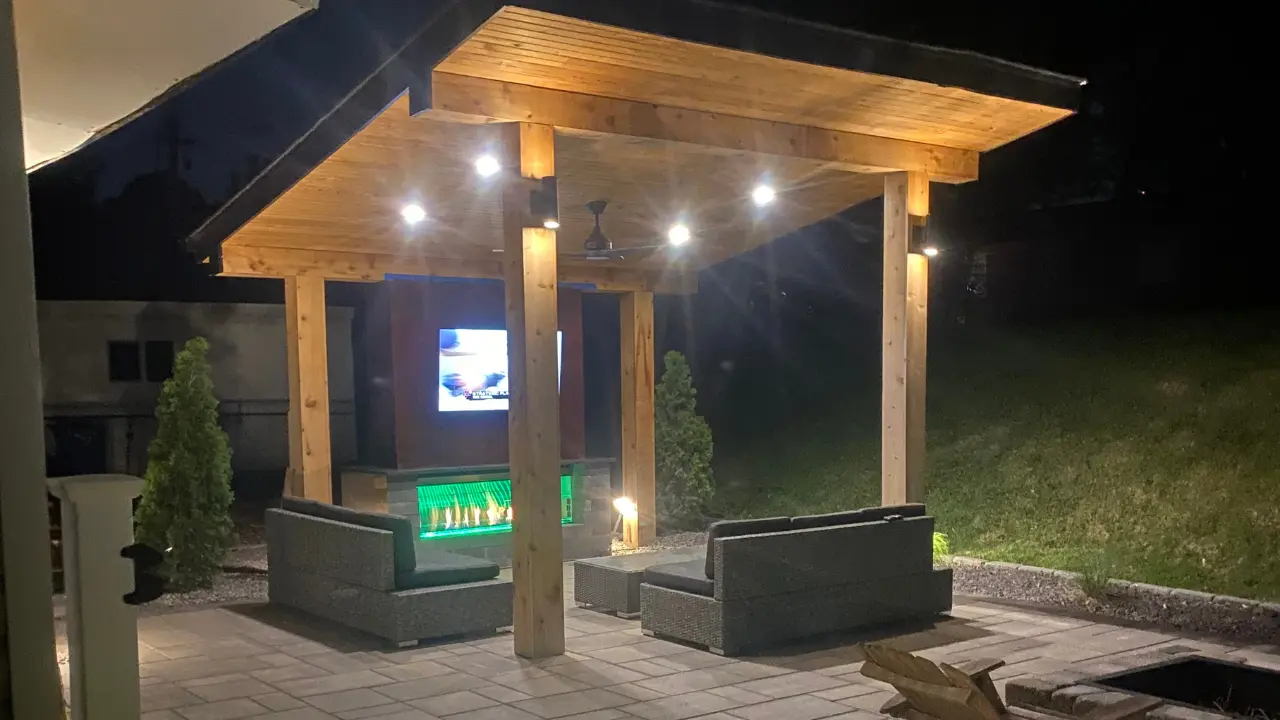Creating a multi-functional outdoor living space is more than just adding a few chairs and a table to your backyard. It’s about designing a space that seamlessly blends comfort, functionality, and aesthetics, allowing you to enjoy your outdoor area in multiple ways. Whether you love entertaining guests, relaxing with a book, or dining under the stars, a well-designed space can enhance your lifestyle and increase the value of your home.
A thoughtfully planned outdoor design maximizes your space while ensuring that each area serves a specific purpose. With the right layout, furniture, and features, you can create a backyard that is as versatile as it is beautiful. Working with an experienced patio builder or outdoor living contractor can help bring your vision to life, ensuring your space is both functional and stylish.
In this guide, we’ll explore the key steps to designing a multi-functional outdoor living area. From defining your space’s purpose to selecting the right furniture and incorporating year-round features, we’ll cover everything you need to know to create a backyard oasis you’ll love.
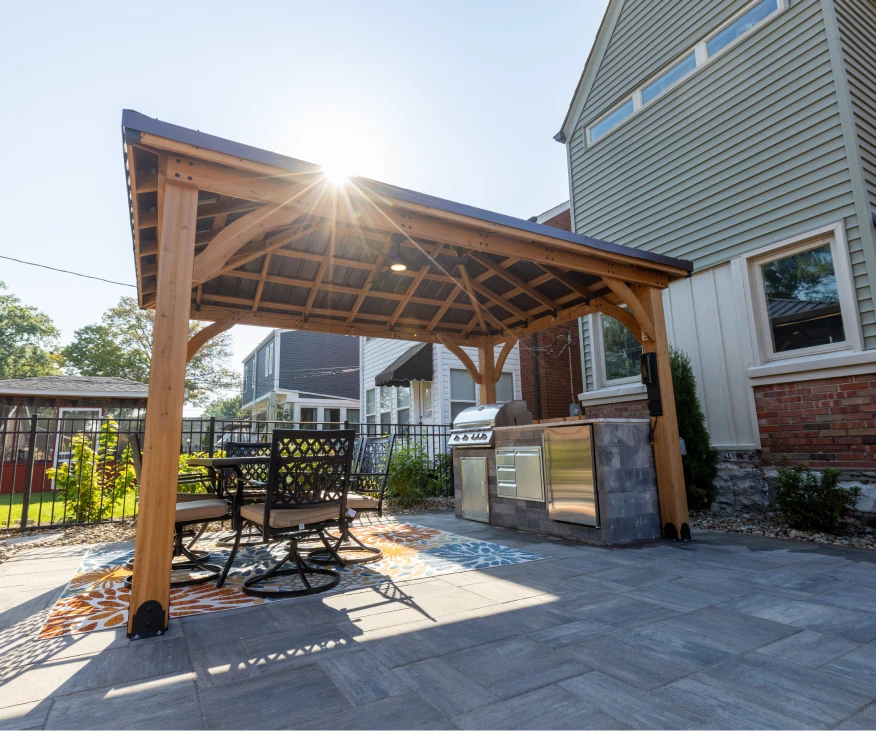
Step 1: Define Your Outdoor Space’s Purpose
Every great outdoor living space starts with a clear vision. Before diving into materials, furniture, and décor, consider how you want to use your outdoor area. Defining the purpose of your space will guide every decision in the design process.
Do you envision a cozy retreat for quiet mornings with a cup of coffee? Or perhaps a lively entertainment hub where friends and family gather for summer barbecues? If you work from home, you might even want to carve out a shaded nook for an outdoor office. Identifying your priorities will help determine the layout and essential features.
Once you’ve established your primary needs, consider how different functions can coexist. A dining area can double as a workspace, while a fire pit can serve as both a focal point for gatherings and a cozy spot for relaxation. The key is to create a balance between designated zones and a natural flow between them.
Think about your household’s needs throughout the year. If you have kids, incorporating a small play area might be beneficial. If you love to cook, an outdoor kitchen could be a game-changer. By defining your space’s purpose early on, you ensure that every square foot is optimized for enjoyment and practicality.
A well-defined outdoor living space also enhances your home’s value. Prospective buyers love a backyard that is not only beautiful but also highly functional. Partnering with a skilled outdoor living contractor can help bring your ideas to life with a professional touch.
Step 2: Plan the Layout for Flow and Functionality
A well-planned layout is the backbone of a successful outdoor design. Without careful planning, your space may feel cluttered or underutilized. Creating an intuitive flow ensures that every section serves a purpose while maintaining a cohesive look.
Start by dividing your outdoor space into different zones. A dining area, lounge space, and cooking station should each have a defined spot while still feeling connected. This zoning approach prevents overcrowding and helps each area feel intentional. Consider using natural dividers like planters, outdoor rugs, or different flooring materials to subtly separate zones.
Pathways and transitions are just as important as the zones themselves. Wide walkways, stepping stones, or deck transitions can help guide movement through the space. Avoid obstacles that make the space feel fragmented, and ensure there’s enough room to move comfortably between areas.
A patio builder can help you make the most of your available space by incorporating features like built-in seating, pergolas, and tiered decks. These elements enhance the design while maximizing functionality, ensuring your outdoor living space works seamlessly for your needs.
Don’t forget to consider traffic flow when placing furniture. Arrange seating in a way that encourages conversation but doesn’t block movement. With the right layout, your backyard will feel open, inviting, and perfectly suited for multi-purpose use.
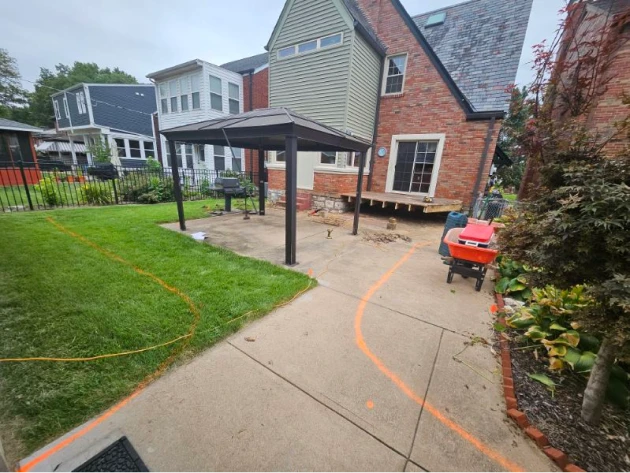
Step 3: Choose Versatile & Space-Saving Furniture
Selecting the right furniture is crucial for a multi-functional outdoor space. Your choices should complement the overall design while offering flexibility for different activities.
Look for multi-purpose furniture that adapts to your needs. Modular seating allows for easy rearrangement depending on the occasion, while storage benches keep outdoor essentials organized. Foldable or extendable tables are perfect for small gatherings and larger events alike.
Durability is another key factor when choosing outdoor furniture. Weather-resistant materials such as teak, aluminum, and high-quality resin wicker ensure longevity and easy maintenance. Investing in cushions and upholstery made from outdoor-friendly fabrics helps maintain comfort and style throughout the seasons.
A patio builder can offer custom-built solutions, such as built-in seating or an outdoor bar that doubles as a workspace. These space-saving options help maximize functionality while maintaining a sleek and cohesive aesthetic.
When choosing furniture, consider the scale of your outdoor living space. Avoid oversized pieces that overpower the area, and instead opt for streamlined designs that enhance both comfort and usability. By selecting versatile furniture, you can create a dynamic space that transitions effortlessly from one function to another.
Step 4: Incorporate Smart Outdoor Features
To maximize the functionality of your outdoor living space, integrating smart outdoor features is essential. These additions not only enhance convenience but also allow you to enjoy your outdoor area in any season.
Retractable awnings and pergolas provide shade and weather protection, making your space comfortable year-round. Motorized options allow you to adjust coverage depending on the time of day or weather conditions. Adding outdoor ceiling fans or misting systems can also help keep your space cool during warmer months.
Outdoor kitchens with movable islands or foldable countertops offer cooking flexibility without compromising space. Smart lighting solutions, such as motion-sensor path lights and color-changing LED fixtures, can create ambiance while improving safety.
Technology can further enhance your outdoor living space. Wireless outdoor speakers, weatherproof televisions, and even smart irrigation systems help create a modern, easy-to-maintain environment. Consider investing in home automation features that allow you to control lighting, music, and temperature with a smartphone app.
By incorporating smart outdoor features, you can create an efficient and comfortable space that adapts to your lifestyle, making your backyard a true extension of your home.
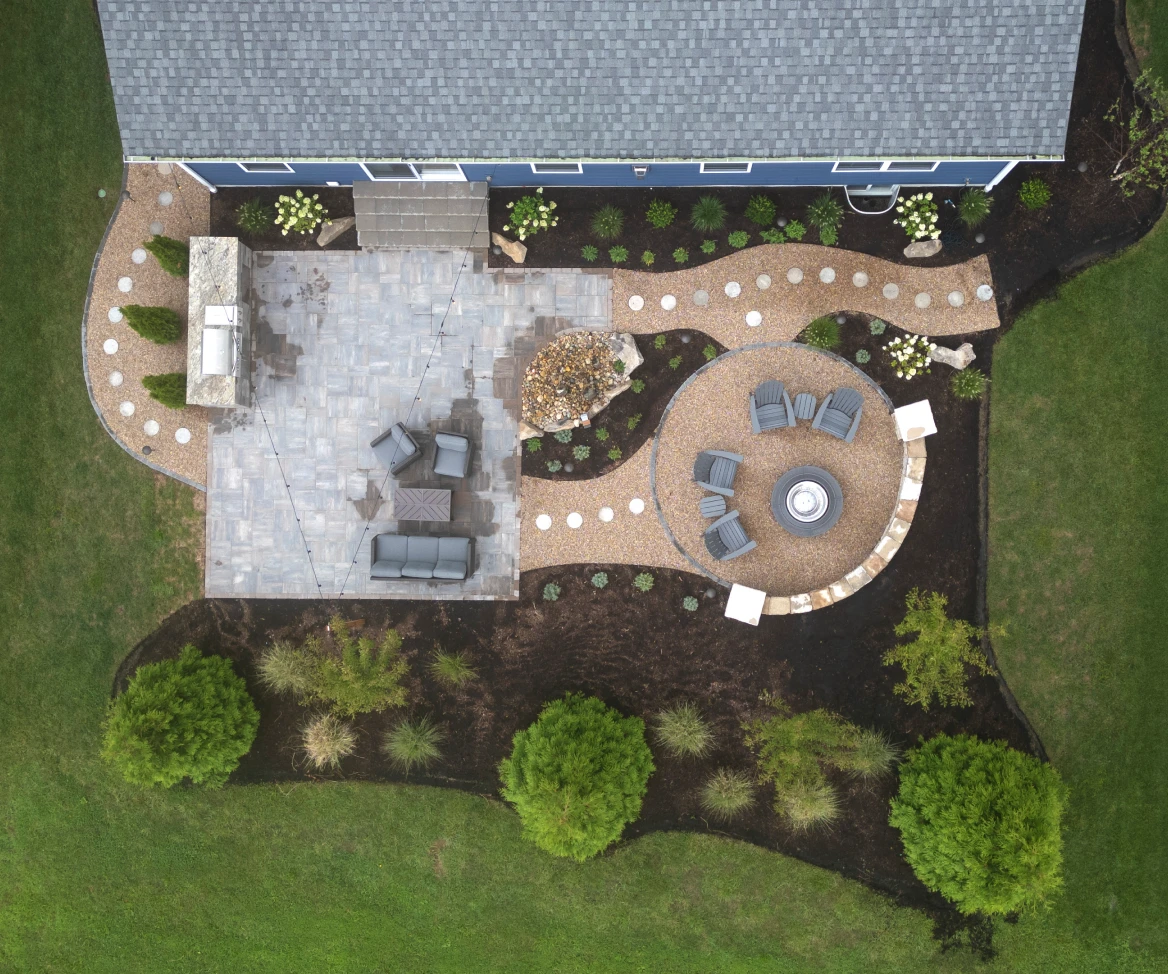
Step 5: Personalize Your Space
Personalizing your outdoor living area ensures it reflects your unique style while making it feel more inviting and functional. Thoughtful touches and decor elements can transform a basic patio into a true outdoor retreat.
Start with a cohesive color palette that complements your home’s exterior. Choose outdoor rugs, throw pillows, and cushions in colors and patterns that create a warm, welcoming atmosphere. Adding string lights, lanterns, or fire features can further enhance ambiance.
Incorporate elements that reflect your lifestyle, such as an outdoor bar for entertaining, a hammock for relaxation, or a designated space for yoga or meditation. Using natural materials like wood and stone helps blend your outdoor design seamlessly with the landscape.
Art and décor can make your space feel more inviting. Consider hanging outdoor-friendly artwork, installing a decorative fountain, or using sculptural planters to add character. DIY projects, such as hand-painted flower pots or custom-built furniture, can also add a personal touch.
Ultimately, a personalized outdoor living space should feel like an extension of your home. By integrating elements that reflect your personality and lifestyle, you can create a backyard that is both beautiful and functional.
FAQs: Designing a Multi-Functional Outdoor Living Space
Q: What are the essential elements of a multi-functional outdoor space?
A: Key elements include defined zones, versatile furniture, smart storage solutions, and weather-resistant materials.
Q: How can I make my outdoor space usable year-round?
A: Consider features like pergolas, outdoor heaters, fire pits, and retractable awnings to provide comfort in all seasons.
Q: What’s the best way to create privacy in an outdoor living space?
A: Use strategic landscaping, privacy screens, pergolas with curtains, or trellises with climbing plants for a secluded feel.
Q: How can I make my small backyard feel larger?
A: Opt for multifunctional furniture, light-colored materials, vertical gardens, and open-concept layouts to create a more spacious feel.
Q: Do I need a professional patio builder or outdoor living contractor?
A: While DIY projects are possible, a professional can help design a cohesive space that maximizes function and aesthetics while ensuring durability.
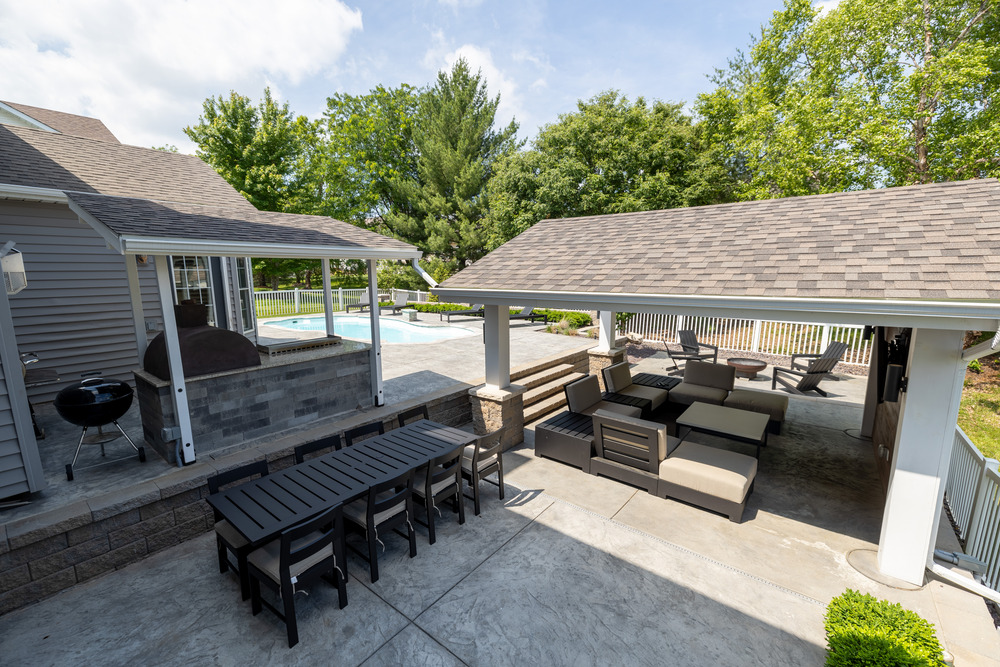
Bring Your Outdoor Vision to Life with Expert Design
Designing a multi-functional outdoor living space requires careful planning, but the results are well worth the effort. By defining your space’s purpose, optimizing the layout, selecting versatile furniture, and incorporating smart outdoor features, you can create a backyard that enhances both your home’s value and your lifestyle.
For homeowners looking to elevate their outdoor living experience, Bobby K Designs specializes in crafting stunning, functional outdoor living spaces. Their expert team can help bring your vision to life, whether you’re starting from scratch or upgrading an existing area. From custom patios to complete backyard transformations, they provide tailored solutions that blend beauty, comfort, and practicality.Ready to create the perfect outdoor oasis? Visit Bobby K Designs to learn more about how they can help you design an outdoor space that meets your needs and exceeds your expectations!


